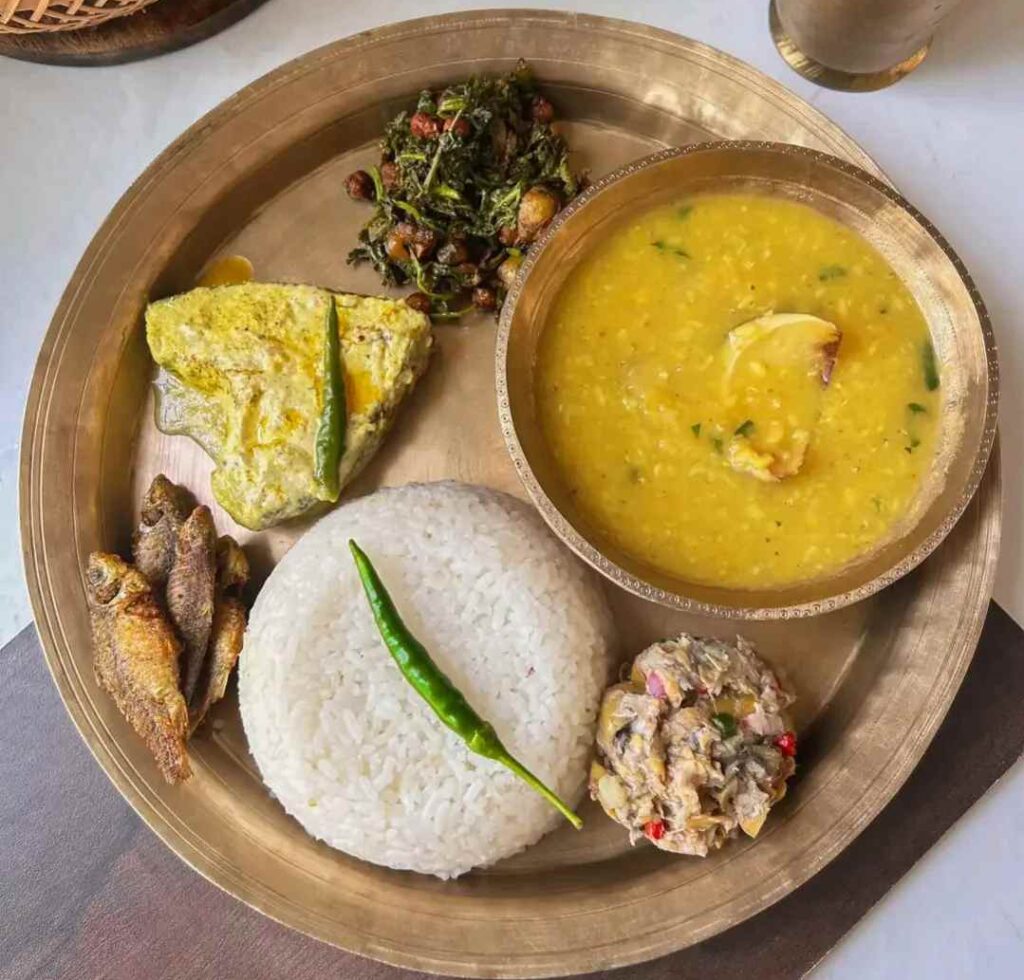North East India is a region blessed with diverse ethnic groups, and this diversity is reflected in its cuisine. The eight states each have their own distinct culinary traditions, drawing from their local ingredients, tribal heritage, and varying climates. The cuisines of North East India are characterised by simplicity, minimal use of spices, and the use of fresh, organic ingredients like bamboo shoots, fish, rice, and a variety of meats.

In this blog, we will explore the fascinating range of dishes that make up the culinary tapestry of North East India, the special ingredients used, and what makes each state’s food unique.
1. Assam: A Blend of Rich Flavors
Assamese cuisine is deeply influenced by the Brahmaputra River and the fertile plains surrounding it. Rice, fish, and lentils form the backbone of Assamese food, with a focus on simple, less spicy preparations that enhance the natural flavors of the ingredients.
2. Nagaland: A Carnivore’s Paradise
Naga cuisine is known for its love of meat and its bold, smoky, and spicy flavors. It is a carnivore’s delight, with pork being a favorite meat. The use of fermented ingredients and bamboo shoots adds a distinct flavor to Naga dishes.
3. Manipur: A Balance of Flavors
Manipur’s cuisine is light, refreshing, and balances a variety of flavors, from tangy to mildly spicy. Rice forms the staple of Manipur’s diet, along with fresh vegetables, fermented fish, and herbs. Manipuri cuisine is often flavored with indigenous ingredients that are difficult to find elsewhere in India.
4. Meghalaya: Simplicity and Freshness
The cuisine of Meghalaya is predominantly non-vegetarian and is deeply rooted in the tribal traditions of the Khasi, Jaintia, and Garo communities. The food is simple, with an emphasis on natural ingredients and fresh herbs. Pork and beef are commonly consumed, and rice remains the staple grain.
5. Mizoram: A Fusion of Flavors
Mizo cuisine is a harmonious blend of local ingredients and simple cooking techniques. The food in Mizoram is light, mildly flavored, and usually cooked in bamboo or over an open fire. Vegetables, rice, and meat are the cornerstones of Mizo food, with very little oil or heavy spices used.
6. Arunachal Pradesh: Tribal Traditions and Exotic Flavors
Arunachal Pradesh is home to several tribes, and the cuisine reflects this diversity. The food here is heavily influenced by Tibetan and tribal cooking styles, with fermented foods, bamboo shoots, and meats playing a significant role.
7. Sikkim: A Taste of Tibet
Sikkim’s cuisine is heavily influenced by Tibetan, Nepali, and Bhutanese culinary traditions. The state’s food reflects its hilly terrain and cold climate, with hearty soups, steamed dumplings, and fermented foods making up the bulk of the diet.
8. Tripura: A Mix of Tribal and Bengali Influences
Tripura’s cuisine is an interesting mix of tribal dishes and Bengali flavors. Rice and fish dominate the diet, and the use of fermented fish (berma) adds a distinct flavor to many traditional dishes.
A1. Smoked Pork with Bamboo Shoots is one of the most iconic dishes in Nagaland. It’s known for its smoky, tangy, and spicy flavours.
A2. Assamese cuisine is known for its minimal use of spices and emphasis on fresh, seasonal ingredients. Dishes like Masor Tenga (a tangy fish curry) and Khar are iconic.
A3. Fermented foods are a staple in North East Indian cuisine. Fermented soybean (Axone), fermented fish (Ngari), and bamboo shoots are widely used across the region.
A4. Yes, while non-vegetarian dishes are predominant, North East India also offers plenty of vegetarian options like Chhum Han (Mizoram), Singju (Manipur), and Pitha (Assam).